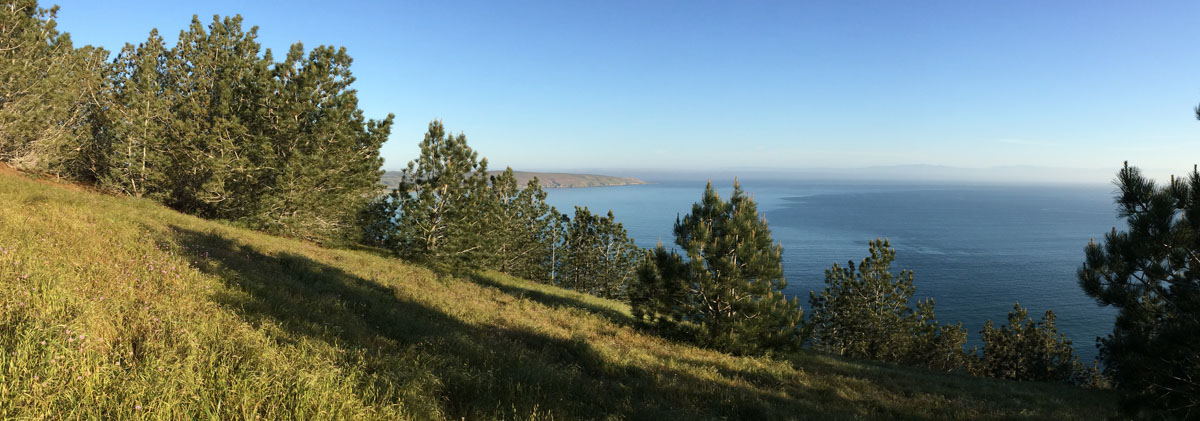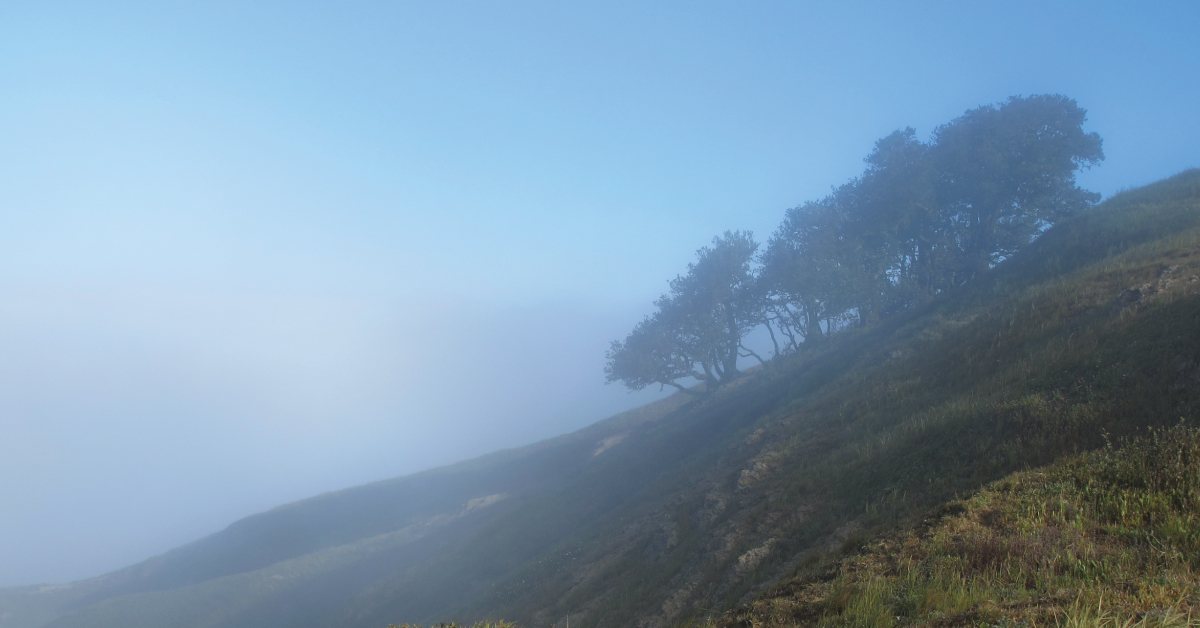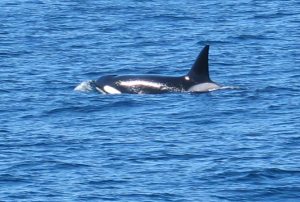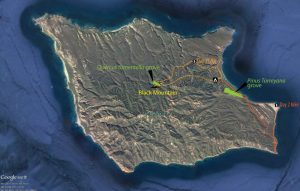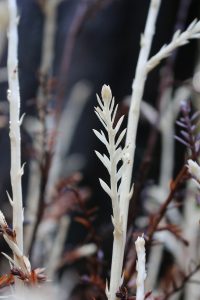Santa Rosa Island Torrey pine (Pinus torreyana ssp. insularis)
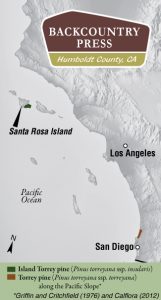
The first time Santa Rosa Island landed on my plant exploring radar screen was when I learned about the Torrey pine some time in the early 2000s. I had never even seen this tree until I took a trip to Torrey Pines State Reserve north of San Diego in early 2012. It is the rarest pine in North America with several thousand “mature” trees on both the mainland and island. My bucket list for understanding the ecology of this species is complete now that I have visited the island.
As mentioned in an early post, pigs were first introduced on Santa Rosa in the mid 1800s. By 1888 it is estimated, based on historical records, that there were only 100 Torrey pines on the island. Today, all herbivorous megafauna have been removed (minus 5 sterile horses from the old ranch) and the Torrey pine are thriving–with an estimated 12,300 trees–one-quarter of which are saplings!
Researchers debate the arrival time of the Santa Rosa Torrey pine, estimating anywhere from 6,000 to over 1 million years. Disagreement also exists as to whether these two population represent subspecies or varieties of each other. Some argue the two populations are genetically different enough to be considered a subspecies, others prefer distinction at the variety level. Regardless, it is a beautiful species and well worth seeing in the wild.
